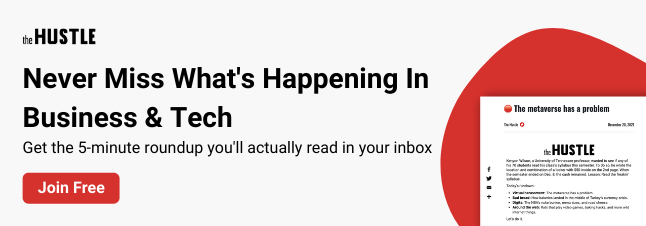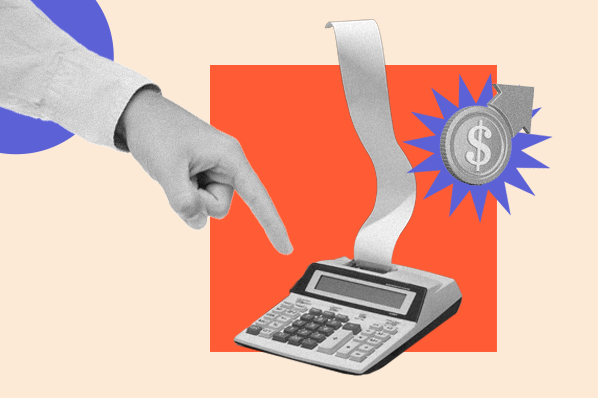Events like international conflict, the pandemic, worker shortages, and extreme weather have disrupted global supply chains. If the past years have taught businesses anything, it’s that nothing can be taken for granted — including smooth supply chain operations.
Many supply chain risk factors are outside an individual business owner’s control, but you can avoid some risks. Either way, learning risk management for supply chain operations is an essential step in building a resilient and adaptable business.
What is risk management in supply chain?
Supply chain risk management (SCRM) refers to the use of strategies to identify, assess, and mitigate disruptions. It includes efforts to reduce the impact of various types of risk — from everyday events to unprecedented disruptions — using continuous monitoring and mitigation plans.
Risks in your supply chain vary in their severity, and they can come from internal and external sources.
Internal supply chain risks
You can break up internal supply chain risks into the following five categories:
- Manufacturing risks refer to disruptions in your internal operations or work processes. Example: An essential machine breaks down.
- Cybersecurity risks happen when someone takes advantage of a vulnerability in your technology. Examples: Data breaches and cyberattacks.
- Business risks can involve high employee attrition or management and organizational structure changes. Example: Your project manager leaves for another job.
- Cultural risks involve the negative impact of an element of your company culture. Examples: Tolerance for cutting corners or hiding mistakes.
- Data risks occur when information in your supply chain management system is inaccurate. Example: Ordering the wrong amount of materials from your supplier.
External supply chain risks
For the most part, external risks are largely out of your control. These events happen outside of your organization but still impact your operations.
You can divide external risks into the following categories:
- Political and governmental risks can occur when there’s political unrest or a lack of stability in the regulatory environment. Example: International conflict.
- Financial and economic risks include events that negatively impact your business’s financial health. Examples: Recession, unfavorable exchange rates, and the bankruptcy of a key customer.
- Extreme weather risks include natural disasters. Examples: Tornadoes, wildfires, and hurricanes.
- Logistics risks include those associated with the storage and transportation of your products. Examples: Warehouse theft, spoiled products, and logjam at ports.
- Supplier risks refer to risks that occur within your supplier relationships. Examples: Supplier bankruptcy, contract breaking, and reputational risk by working with providers having legal trouble.
- Quality risks happen when the quality of any of the materials in your supply chain (such as raw materials, ingredients, manufacturing processes, or packaging) results in product or service errors. Example: Failure of a car part that ends in a recall.
- Legal risks include events that can result in hefty fines or legal expenses. Examples: Contractual violations, patent infringements, and law violations.
Why is supply chain risk management important?
Identifying and managing risks in your supply chain supports business continuity and lets you deliver a superior customer experience. It also allows for a more resilient and financially robust organization.
According to a 2022 Körber Supply Chain (KSC) report, 92% of respondents said that supply chain performance is important for the customer experience. If you don’t address supply chain risks, disruptions can lead to a lack of inventory, longer wait times for orders, and serious quality issues.
Any of these can create a negative customer experience and cause you to lose any hard-earned trust you’d developed.
Supply chain risks also can turn into a financial liability for your business, such as expensive legal fees or low profit margins.
By identifying and planning for risks, you can avoid those that are in your control and reduce the impact of those that aren’t.
Supply chain risk management framework: Five steps
Taking a systematic approach to your supply chain risk management will be more effective and consistent than an ad hoc approach. Here are the five steps you can take to reduce risk and create more supply chain resilience.
1. Identify potential risks
The first step is identifying potential risks and unplanned events in your supply chain. One effective way to do this is by holding a pre-mortem meeting.
In a pre-mortem, your team imagines the project has failed in the future and asks, “What are the possible reasons we could have failed?”
The exercise of anticipating failure helps you identify the most relevant potential risk events for your project. In the identification stage, you want to focus on idea generation, not rejection. Analysis will come next.
2. Assess each risk
Not all risks are created equal. In the risk assessment stage, your goal is to figure out which potential risks are the most serious. This way, you can properly allocate resources for developing and executing contingency plans.
As Zack Williams, founder of ROI Marketing Firms, explains, risk assessment specifically looks at “how likely and harmful your possible risks are.”
The most serious risks have a high probability of occurring plus a significant impact on your business. In contrast, less serious risks are not as likely to happen, and even if they do, they will have a smaller effect.
To standardize your assessments, you can use a scorecard that ranks each risk event based on likelihood and severity. Likelihood can range from “unlikely” to “highly possible.” The impact can range from “trivial” to “catastrophic.”
Your past experience can help you determine risk likelihood. For instance, if your business typically experiences high turnover, the risk of losing personnel mid-project may be more likely for you.
External data also offers valuable insights for estimating the likelihood of a risk. For example, weather data can inform the likelihood of natural disasters in an area, and economic drivers can indicate the likelihood of economic events, such as recessions.
3. Create mitigation strategies and response plans
At this stage, you want to focus on lowering risk exposure and creating contingency plans in case of supply chain disruption.
Here are four risk mitigation approaches you can take:
- Avoid/Prevent: Take steps to prevent the risk from occurring in the first place.
- Reduce: Take measures to reduce the likelihood or impact of the risk.
- Transfer: Pass the liability or consequences of the risk to a third party.
- Accept: Accept the risk as it is but continue to monitor it (usually used for less serious risks).
Your risk mitigation plan should include:
- The goal of your strategy: Avoid, reduce, transfer, or accept
- Main plan of action: Steps that will be taken to monitor the risk and avoid, reduce, or transfer it (if necessary)
- Contingency plan: What you will do if the risk does occur
- Risk owner: The person responsible for monitoring the risk and overseeing the contingency plan if necessary
4. Monitor potential risks
It’s typical to assign an individual to each supply chain risk. This person will monitor the risk and implement contingency plans when needed. It’s crucial that you collect accurate metrics and have a good flow of communication so potential risks can be flagged early.
Risk monitoring typically involves tracking the metric associated with the risk. For instance, if one of your risks involves going over budget, the risk owner will be responsible for tracking the total expenses associated with the project.
Risk owners may also track whether deadlines are being met, if the scope of the project has changed, and if the final deliverables meet your predefined quality standards.
5. Review your risk management program
In addition to monitoring individual risks, it’s helpful to assess the effectiveness of your risk management program as a whole. Auditing your process and methodology helps identify opportunities to improve your ability to identify, analyze, and respond to risks over time.
Regularly assess the quality of your risk management system by putting together a governance team that reviews how well your system has worked. Supply chain risk governance teams typically include employees or managers who double as risk owners and have an active role in identifying, assessing, and monitoring risk.
This group can meet on a regular basis to discuss the top priority risks in your supply chain. They can also use their insight as risk owners to suggest opportunities to improve your strategy.
Supply chain risk management examples
Example 1: Risk avoidance
Say you own a business that sells cosmetics, and you want to expand by adding hair care products to your portfolio. However, you know that toxic chemicals are an industry risk for your business.
Here’s an example of how you could work through the steps in the SCRM framework to avoid potential risk when evaluating potential suppliers:
- Identify: You identify toxic chemicals as a risk. In particular, you discover that in large amounts, benzene, which is commonly used in aerosol products, is a known carcinogen.
- Assess: You’ve never sold hair products, so you look at outside data to determine likelihood. You see that last year, 19 companies had to recall aerosol products due to high levels of benzene and rate the risk as “high.” The impact involves product recalls, loss of consumer trust, and negative brand exposure, so you rate the impact as “high.”
- Create a mitigation strategy: Your risk mitigation strategy is to avoid the potential event altogether. You decide not to use aerosol formulas in your hair care line.
- Monitor: While you have avoided the risk associated with using benzene, you continue to monitor the negative impacts of the chemicals that you do use in your products in case the information about their safety changes.
As a result of your risk management system, you can avoid this risk entirely.
Example 2: Risk reduction
The same hypothetical company could also use the framework to address risks that are not in its control.
Say you purchase materials from a single vendor.
- Identify: You identify vendor bankruptcy as a potential risk.
- Assess: You rate the likelihood of the risk as “medium” because your vendor is a small business. However, the impact is “catastrophic,” as you would have to shut down your entire production process.
- Create a mitigation strategy: To mitigate the risk, you diversify your suppliers. You find another vendor and split your orders between the two of them.
- Monitor: You maintain open communications with both vendors through monthly procurement and inventory planning meetings.
A recession puts your first vendor out of business six months after you bring on a second vendor. While you couldn’t avoid this risk, you did reduce its potentially catastrophic impact.
By monitoring the risk, you could tell that your first vendor struggled to keep operations running smoothly. That allowed you to shift more of your incoming orders to the second vendor. So, there was minimal impact on your customer experience.
What did you think of this article?
Business Acumen








![Business Ethics — Why They Matter and How Your Company Can Get it Right [+Expert Tips]](https://53.fs1.hubspotusercontent-na1.net/hubfs/53/business-ethics-1-20250224-5750570.webp)






